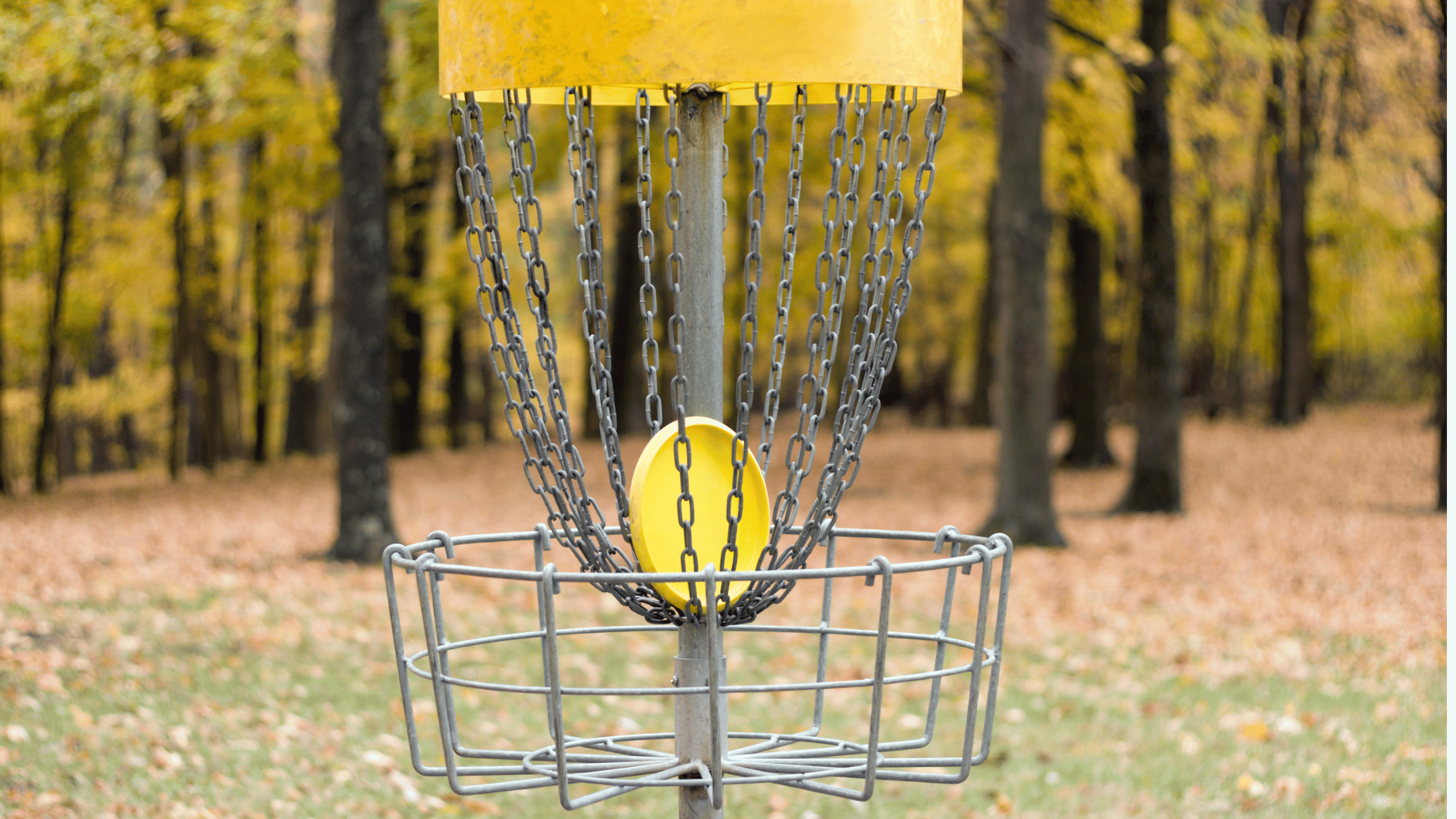Disc golf is a fun and exciting sport that has been gaining popularity in recent years, making it an excellent hobby for beginners.
It combines the best elements of both traditional golf and frisbee, offering a challenging and enjoyable experience for people of all ages and skill levels.
As a beginner, you might find the sport to be a bit overwhelming at first, but don’t worry – just like any other hobby, you’ll get the hang of it with practice and determination.
This article contains affiliate links. If you make a purchase through a link on our site you are supporting our continued efforts to educate people like you in finding new and rewarding hobbies. Thank you!

Before you dive headfirst into the world of disc golf, it’s essential to familiarize yourself with the basic rules, equipment, and techniques required for success.
To get started, you’ll need a set of discs, including a driver, mid-range, and putter, each uniquely designed to perform specific functions throughout the game. As a beginner, look for discs with lower speed ratings, as they are easier to control and will help you develop your skills more efficiently.
Once you have the necessary equipment, head to your nearest disc golf course and start practicing. You’ll quickly notice that playing disc golf not only tests your physical abilities but also challenges your mental focus, strategy, and decision-making skills.
Enjoy the journey, embrace the challenges, and watch as your newfound hobby expands your expertise and fuels your passion for the sport.
Understanding Disc Golf

Disc golf is a fun and popular sport that combines elements of traditional golf with frisbee throwing.
This accessible and entertaining outdoor activity has quickly gained a loyal community of players who enjoy its blend of strategy, skill, and friendly competition.
As you embark on your disc golf journey, you’ll find that it is not only a healthy way to stay active but also fosters camaraderie and sportsmanship among its members.
To get started in disc golf, you’ll need to familiarize yourself with the basic rules and gameplay. Just like in regular golf, your goal is to complete each hole on a disc golf course by throwing a disc from a tee box and ultimately landing it in a basket. The player with the fewest throws at the end of the round wins. You’ll find courses in parks and recreational areas, designed to showcase the natural beauty of the outdoors while testing your skills and strategy.
One of the great aspects of disc golf is its accessibility. The sport is open to players of all ages and skill levels, and you don’t need to invest a lot in equipment or memberships to join in the fun. A few discs and a willingness to learn are all that’s required to enjoy this dynamic and diverse game.
As you progress in your disc golf journey, you may choose to join local clubs or participate in tournaments. This can open up new opportunities for improving your skills, meeting like-minded enthusiasts, and experiencing the spirit of friendly competition that the disc golf community is known for. Take advantage of the resources and support that fellow players offer, and you’ll find the sport to be a rewarding and fun pursuit.
Remember, disc golf is not only about competition but also embracing the outdoors, maintaining a healthy lifestyle, and connecting with others who share your passion. Keep these values in mind as you explore this exciting and challenging sport, and you’re sure to have a great time on the course.
Basic Rules and Scoring
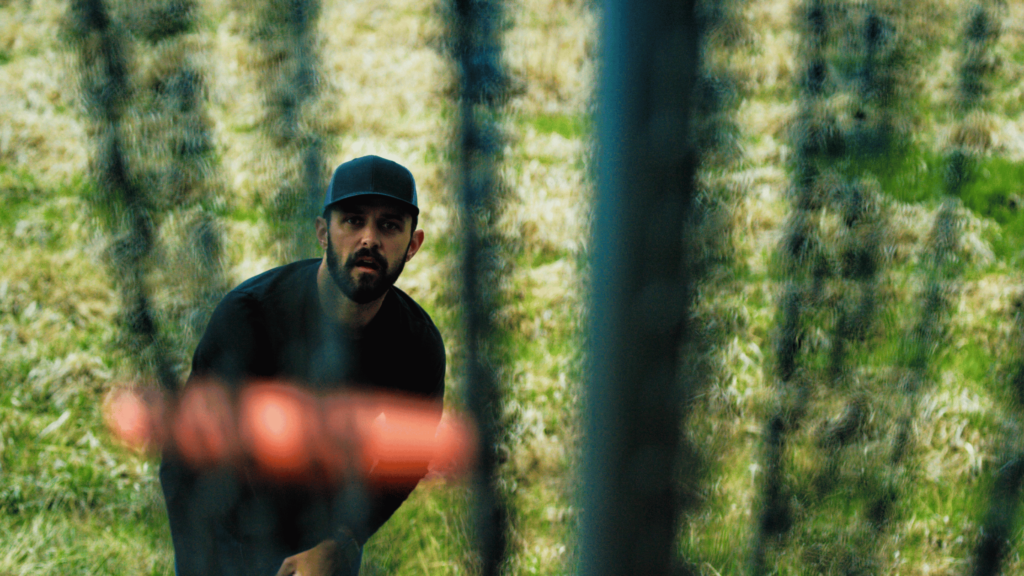
Rules of Disc Golf
Disc Golf is a fun and exciting outdoor sport that is enjoyed by people of all ages and skill levels. It combines elements of traditional golf and frisbee to create a unique and challenging game. To get started with disc golf, it’s essential to understand some of the basic rules.
- Teeing off: Each hole begins at the designated tee area. Stand within the tee area and throw your disc towards the target, which is a basket-shaped structure called the hole.
- Playing the lie: After your initial throw, you should always throw subsequent shots from directly behind the spot where your disc landed, this spot is called the lie.
- Out of Bounds (OB): If your disc lands out of bounds, you must add a penalty stroke to your score and play from the last in-bounds spot your disc crossed.
- Mandatories: Some courses have mandatory obstacles, signified by an M or arrows, where you must navigate your disc between certain objects or around specific routes.
- Etiquette: You should always let the player farthest from the basket throw first, never interfere with others’ throws, and remain quiet when someone is making their throw.
Scoring in Disc Golf
In Disc Golf, the goal is to complete each hole with the fewest throws or strokes possible. Scoring in disc golf is based on a system similar to traditional golf but with easier-to-understand terminology:
- Par: The number of strokes (throws) expected for a player to complete a hole. It varies from hole to hole, and completion in par means a net score of 0 on that hole.
- Birdie: Completing a hole in one stroke less than par, which results in a net score of -1 for that hole.
- Eagle: Completing a hole in two strokes less than par, which results in a net score of -2 for that hole.
- Adding/Subtracting Strokes: Players receive +1 to their score for each stroke above par and -1 for each stroke below par.
The total score is calculated by adding each hole’s net score, and the player with the lowest total score wins the game.
Understanding these basic rules and scoring methods helps you to enjoy disc golf and build your skills in the sport. As you continue to play and gain experience with disc golf, you’ll also learn about other factors, like disc selection and course strategies, for improving your game.
Essential Disc Types
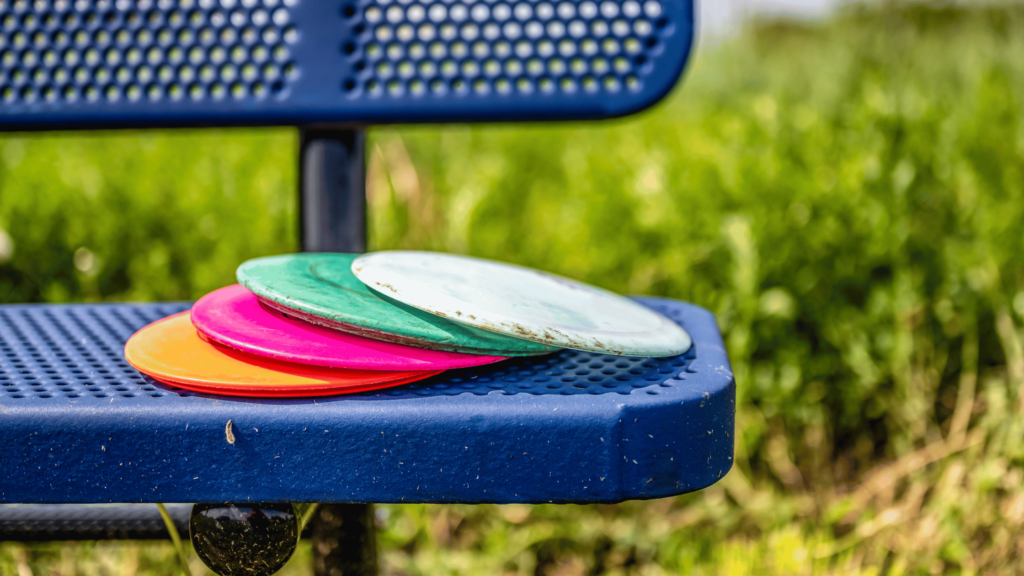
Types of Discs
When starting to play disc golf, it’s crucial to understand the different types of discs available. These can be categorized into four primary groups: distance drivers, control/fairway drivers, mid-range discs, and putters. Each serves a specific purpose on the course.
- Distance drivers: Designed for maximum distance, these discs are best suited for more experienced players with higher arm speed. They typically have sharp edges and a wide rim.
- Control/fairway drivers: With slightly slower speed than distance drivers, control drivers offer better accuracy and stability. They are ideal for players looking for consistent distance with better control.
- Mid-range discs: Used for shorter distance throws, mid-range discs provide enhanced accuracy and control. They are well-suited for a beginner’s arsenal, as they can be used for various shots.
- Putters: Created specifically for short-distance throws and precise shots, putters have the thickest edges and, therefore, the slowest speed. They are essential for finishing a hole when you’re close to the basket.
Understanding Disc Terms
As you familiarize yourself with disc golf, you should be aware of some common terms associated with disc characteristics:
- Speed: Not to be confused with how fast you throw the disc, this term represents the disc’s ability to cut through the air. A higher speed rating requires more power to reach its full potential.
- Glide: Glide measures how well a disc can maintain altitude during its flight. A disc with more glide is generally more beginner-friendly.
- Stability: Representing a disc’s flight pattern, stability is divided into three categories: overstable, stable, and understable. Overstable discs tend to fade left quickly, while understable discs turn right at high speed. Stable discs provide a straighter flight path.
- Fade: Referring to the disc’s tendency to curve left (for right-hand backhand throws) during its flight, fade determines the disc’s landing position.
- Weight: Discs come in various weights, typically measured in grams. Heavier discs offer more control and stability, while lighter ones provide increased distance.
Choosing the right disc type, weight, and understanding the disc’s characteristics will significantly improve your accuracy and control on the course. As a beginner, it’s helpful to start with a starter set featuring a range of disc types for various situations and gradually expand your collection as you gain experience.
Throwing Techniques

Basic Throwing Techniques
In disc golf, perfecting your throwing technique is essential to your success and enjoyment of the game. As a beginner, start by focusing on mastering the two main throwing styles: backhand and forehand, also known as sidearm.
Backhand: This is the most common throwing technique in disc golf. Hold the disc with your fingers under the rim, and your thumb on top. Stand with your feet shoulder-width apart, and turn your body to face away from your target. Take a few small steps, then shift your weight from your back foot to your front foot. As you do this, bring your throwing arm across your body, keeping your elbow close to your side. Release the disc with a snap of your wrist, and follow through with your arm extended towards your target.
Forehand: The forehand, or sidearm, throw is another essential technique in disc golf. Grip the disc with your fingers underneath the rim and your thumb on top, using a ‘power grip’ where your index and middle fingers are against the inner rim. Stand with your feet hip-width apart, facing your target at a slight angle. Swing your throwing arm out to the side with your elbow bent, keeping the disc close to your body. As you release the disc, straighten your elbow and snap your wrist to generate spin and power.
Advanced Throwing Techniques
As you progress in disc golf, you can explore more advanced throwing techniques to increase your accuracy, power, and versatility on the course.
Hyzer and Anhyzer: Both backhand and forehand throws can be adjusted to follow a hyzer or anhyzer line, which changes the disc’s flight path. A hyzer throw curves left for a right-handed backhand, and right for a right-handed forehand. To throw a hyzer, angle the outer edge of the disc downward at release. For an anhyzer throw, angle the outer edge of the disc upward, making it curve right for a right-handed backhand and left for a right-handed forehand.
Overhand: Less commonly used but highly effective in certain situations, the overhand throwing technique involves gripping the disc like a forehand throw, but releasing it overhead, like a baseball or football throw. The overhand throw has two main variations: the tomahawk and the thumber. Both can be used to navigate tight gaps or go over obstacles.
- Tomahawk: Hold the disc with a forehand grip, and throw it overhead with the top of the disc facing forward. This will cause the disc to turn end-over-end and provide a unique flight path.
- Thumber: Similar to the tomahawk, but hold the disc with your thumb on the inside of the rim, and the disc’s bottom facing forward. This throw also turns end-over-end but has a slightly different flight path compared to the tomahawk.
As you improve your disc golf techniques, remember to practice your approach shots and putts, as they are crucial for scoring well. Develop a solid understanding of disc flight numbers and characteristics to choose the right disc for each throw, and always follow through to ensure consistency and accuracy in your shots.
Choosing and Maintaining Your Gear

Choosing Your Disc Golf Discs
When you begin playing disc golf, selecting the right discs is crucial for both enjoyment and improvement. Discs come in various flight ratings, gram weights, and designs, each catering to different skill levels and throwing styles. As a beginner, it’s essential to choose discs that are not too advanced and match your current abilities.
To start, consider acquiring three different types of discs: a putter, a mid-range, and a driver. Putter discs are excellent for short-distance shots and are typically the most comfortable to grip. Mid-range discs, like the popular Discraft Buzzz, offer more control and versatility, making them suitable for various situations on the course. Drivers are designed for maximum distance and can achieve the farthest throws, but they may be more challenging for beginners to control accurately.
While shopping for discs, pay attention to their flight ratings, which indicate their speed, glide, turn, and fade. A lower speed rating is generally more forgiving for new players and allows for easier control. As for gram weight, a lighter disc (around 150-160 grams) may help beginners generate more distance and achieve better throws.
We recommend checking out the WESTSIDE DISCS Three Disc Origio Burst Disc Golf Starter Set as a highly-rated starter set!
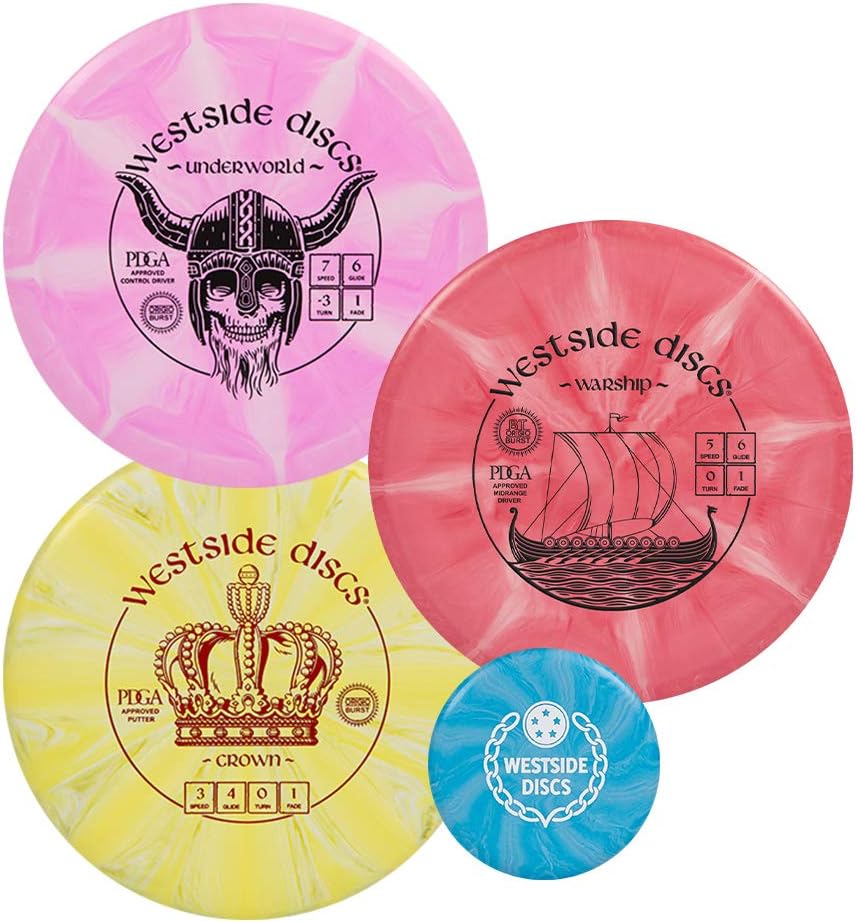
Maintaining Your Discs
Once you’ve chosen your discs, it’s essential to keep them in good condition to ensure their performance remains consistent. Here are some tips to maintain your discs:
- Clean them regularly – After each round of disc golf, clean your discs by rinsing them with water and wiping them dry with a cloth. This helps remove dirt, debris, and any residues that could affect their flight.
- Inspect for damage – Check your discs for any nicks, gouges, or warping that could alter their flight path. Small imperfections can usually be smoothed out with fine sandpaper, but if a disc is severely damaged, it’s best to replace it.
- Store them properly – Keep your discs in a bag specifically designed for disc golf storage or on a disc rack indoors. Avoid exposing them to direct sunlight for extended periods, as UV rays can damage the plastic material and cause them to become brittle.
- Rotate your discs – Using the same disc repeatedly may cause uneven wear, so rotate through your collection to help distribute the wear and tear evenly.
Remember, taking care of your disc golf gear will help ensure a more enjoyable experience on the course and support your growth in this exciting sport.
Disc Golf Courses
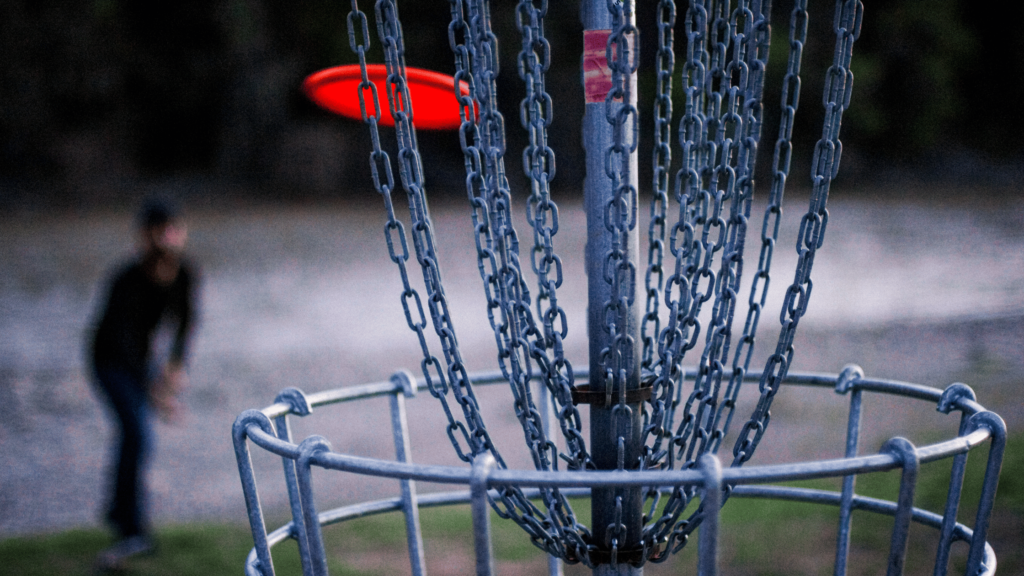
Identifying a Good Course
A good disc golf course makes a big difference in your overall experience. When searching for a course, consider the layout and design of the space. Look for courses with a variety of fairways, terrains, and a mix of open and wooded areas.
This will enhance your technical skills and strategic thinking while playing. Well-designed courses often include tee pads, which provide a level surface for you to start your throws. These surfaces should be safe and comfortable, allowing you to drive with confidence.
Exercise is an essential aspect of disc golf, so select courses that offer a range of physical challenges. Courses with elevation changes and occasional obstacles such as trees or water hazards encourage you to keep your hips moving and improve your overall game.
In addition to the physical aspects, a quality disc golf course should have a well-maintained green and proper signage. This helps you navigate the course and understand the target to aim for.
Navigating Disc Golf Courses
Once you have chosen a course, familiarize yourself with some key components. Disc golf courses typically consist of 9 or 18 holes, each with a specific metal basket target. These targets, often referred to as “holes,” have a diameter of about 55 cm and are mounted on a post with a set of chains to catch the disc.
As a beginner, don’t be intimidated by the variety of obstacles and features of the course. Take your time and pay special attention to the tee signs, which provide valuable information about the hole’s distance and preferred flight path. These signs might also indicate mandatory routes and out-of-bounds areas to avoid.
When approaching the tee pad, ensure your stance is comfortable, and use the time to visualize your throw. While on the fairway, keep an eye out for trees or other obstacles that can influence your shot. Observe the course and pay attention to the optimal path for each hole. This will not only help you understand the layout but also gives you the opportunity to develop your disc golf strategy.
Remember, disc golf is a fun and engaging outdoor activity suitable for all ages, including children. So, enjoy your time on the course, learn from your experiences, and hone your skills as you embrace this exciting hobby.
Understanding Disc Golf Apps and Organizations

Using Disc Golf Apps
One essential aspect of taking up disc golf as a hobby is familiarizing yourself with the various disc golf apps available. These apps can help enhance your playing experience by providing features such as course maps, scoreboards, and social engagement with other players.
The UDisc app is a popular choice among disc golf enthusiasts. With UDisc, you can easily discover new courses, keep track of your scores, and even measure your throws. By incorporating such an app into your disc golf routine, you can enjoy a more organized and interactive experience while out on the course.
Understanding Disc Golf Organizations
As you explore disc golf as a hobby, it’s crucial to understand the organizations responsible for promoting and regulating the sport. The Professional Disc Golf Association (PDGA) is the primary governing body for the sport and offers resources, support, and competition opportunities for players at all skill levels. By becoming a member of the PDGA, you can access benefits such as discounts on tournament entry fees, a player rating, and subscriptions to disc golf publications.
In addition to the PDGA, there are numerous other organizations and clubs focused on supporting and growing disc golf. These groups often meet for events, tournaments, and social gatherings, providing a great way to connect with fellow disc golf enthusiasts. To find a club or organization near you, consult the club directory provided by the PDGA.
Remember, engaging with disc golf apps and organizations can make your journey into the sport more enjoyable and satisfying. By understanding and utilizing these resources, you’ll be better equipped to make the most of your time on the course and develop a fulfilling hobby.
Advancing Your Game
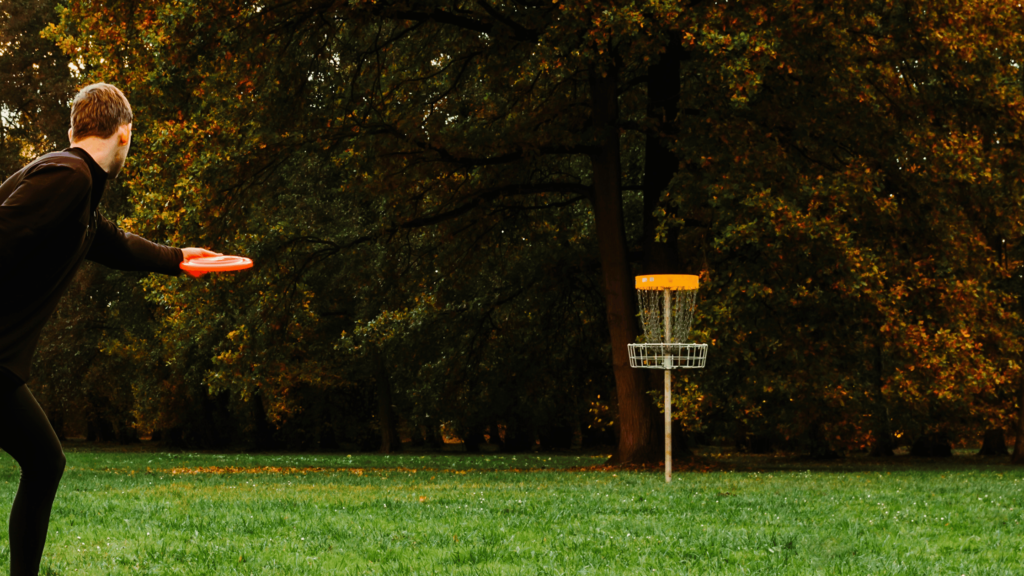
As you progress in your Disc Golf journey, it’s essential to focus on advancing your skills and building a community around the hobby. Here are some strategies to help you take your game to the next level.
Improving Your Throws
Improving your throws is crucial in advancing your disc golf game. Start by mastering the basics like the backhand, forehand, and putting techniques. As a beginner, practice your grip and aim for consistent releases in each round. You can experiment with various discs from brands like Infinite Discs to find the ones that suit your style and preferences.
In addition to practicing on the course, incorporating a regular workout routine can help enhance your game. Focus on exercises that improve your core strength, flexibility, and balance. This way, you’ll notice improvements in your stability and disc control, allowing for more precise shots.
Here are some key elements to work on:
- Grip: Ensure you have a firm, comfortable hold on the disc.
- Aiming: Focus on your target and visualize the flight path before releasing the disc.
- Release: Develop a consistent release point and follow through with the throw.
- Disc selection: Experiment with different disc types and weights for various situations on the course.
Building a Disc Golf Community
Building a disc golf community can significantly enhance your overall experience and help you advance your game. Seek out local disc golf leagues, clubs, or tournaments to meet fellow players. Participating in organized events can improve your skills, foster friendly competition, and develop your understanding of disc golf strategies.
In addition, engage with online forums, social media groups, and instructional resources to learn from seasoned players and stay updated on the latest disc golf trends and tips.
By focusing on these essential aspects of advancing your game and surrounding yourself with a supportive community, you’ll find disc golf to be a rewarding and enjoyable hobby that challenges you and keeps you motivated for years to come.
Frequently Asked Questions

What basic equipment is needed for disc golf?
To start playing disc golf, you mainly need a few discs, including a putter, a mid-range disc, and a driver. It is also helpful to have a disc golf bag to carry your discs and any other necessary items, like a towel, water bottle, and snacks. Comfortable shoes and appropriate clothing for the weather conditions are essential as well.
What are some good beginner discs?
As a beginner, it is crucial to choose discs that match your current skill level. Look for discs with lighter weights and understable flight characteristics. A good starter set includes a putter, mid-range, and driver. For example, the Innova Disc Golf Starter Set or the Discraft Beginner Set are excellent choices.
How do I find a disc golf course near me?
There are several online resources available to help you find a disc golf course in your area. Websites such as Disc Golf Course Review and apps like Udisc make it easy to discover nearby courses, read reviews, and get directions.
What are the basic rules of disc golf?
The basic rules of disc golf are similar to traditional golf. The goal is to complete a course with the fewest throws. Each hole begins at the tee area, and players throw their discs towards a target called a basket.
Players must throw from the spot where their disc lands until they reach the basket. Various penalties and regulations, such as out-of-bounds and mandatory paths, apply. You can find a more detailed explanation of the rules and etiquette in this Complete 10 Step Guide to Disc Golf Rules and Etiquette.
What is the history of disc golf?
Disc golf has its origins in the early 1900s, but it gained popularity in the 1960s and ’70s. The first official disc golf course was established in Pasadena, California, in 1975, and the Professional Disc Golf Association (PDGA) was formed in 1976. Today, disc golf is played in over 40 countries, with thousands of courses worldwide.
Which disc golf players should I follow?
There are many professional disc golfers to follow and learn from. Some notable players include Paul McBeth, Paige Pierce, Ricky Wysocki, and Catrina Allen. By watching these players in action, you can observe their skills and techniques, helping you improve your own game. Additionally, following disc golf organizations like the Professional Disc Golf Association will keep you updated on current players and events.

